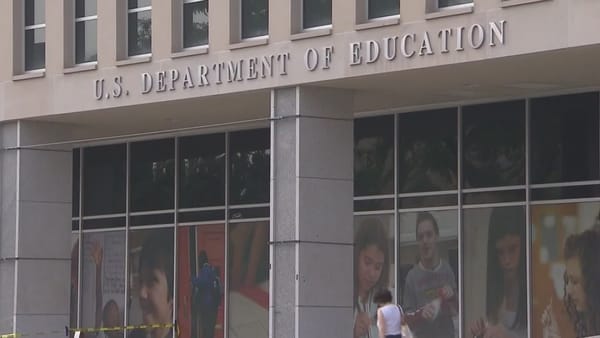Ohio Utility Energy Disparity; Charges Lack Conditional Exemptions

BY NICK ROGERS
STATEWIDE - In April 2024, TOR’s own Nick Rogers sat down for an interview with Local technology expert Vince Welage, who has been investigating the root causes for anomalies in smart meter technology sweeping the state which has resulted in high energy bills. Today, Welage is offering more insight (using his study results) to explain how state utility regulators have allowed Ohio utility companies to charge customers for “smart” meters. Many consumers are facing significant issues related to these advanced meters, but the state legislatures have shown a real lack of regulation oversight enabling the utilities to charge punitive fees on those customers who have chosen to opt-out. Billing overcharges are only one of the harmful components behind the forced home installation of the meters aside from surveillance, safety/health, and security issues.
TOR: Hello, Vince. Great to speak with you again.
Vince: Thanks for having me back.
TOR: Our first discussion centered around a years-long study you conducted on Duke Energy overcharging on electric and gas customers’ bills. You “utilized 600+ monthly statements from the years of 2018-2023, covering 15 zip codes in SW Ohio for homes between 1,275 and 3,500 square feet.” My understanding is that your study has continued on past our first interview. Is this correct?
Vince: Yes. The number of statements analyzed has now exceeded 700 and the study has expanded to cover 25 zip codes in SW Ohio from the years 2018-2024.
TOR: A key starting point for your research was that of monthly kilowatt-hour (kWh) usage. Have those numbers remained relatively similar for the participants in your study?
Vince: With the study ongoing, the monthly kWh usage median value has actually dropped from 628 to 576. The reason for the reduction is that I have been able to add many new accounts for which customers, in many cases, provided a full year of billing history which gives the complete 12-month total kWh usage history. In the early stages of the data collection, I was only able to collect fragments (3-6 months) from some customers who had limited access to online billing history, but they provided hard copies only available from home recordkeeping.
TOR: The lower monthly average, I assume, makes the disparity of actual energy usage vs. what customers are paying (because of fixed costs and hidden delivery tariffs [“riders”]) even greater than your initial findings.
Vince: Definitely. Despite efforts by many utility customers to reduce usage consumption through energy-efficient investments, the monthly bills continue to increase due to the inclusion of the customer fees (fixed + riders) that have reached unaccounted for levels at over 60% billed versus actual usage costs as part of the monthly statement.
TOR: 60%? That’s, uh…a lot.
Vince: No kidding.
TOR: The Public Utilities Commission of Ohio (PUCO) approved Duke rate increases in 2018 and 2021. These riders are not itemized for the customers, and you’ve found that many customers are not even aware of these fees. You’ve told me that Duke currently maintains PUCO approval for over 20 electric delivery riders and over 10 gas delivery riders. Which rider(s) do you view as the most egregious and why?
Vince: By far the DCI (Distribution Capital Investment) rider. It’s the most troublesome because the tariff charges a percentage of the customer’s applicable base distribution charges (i.e., customer charge plus base distribution charge) in order to recover the revenue requirement associated with incremental distribution capital costs incurred by the company. Those customers who are paying a [Smart] meter opt-out fee are facing double jeopardy by financing the grid through fixed charges and riders for the Smart grid which is nothing more than a punitive surcharge approved by PUCO in the 2018 rate increase.
TOR: Duke was granted this Smart meter opt-out fee by PUCO to the tune of a $100 one-time charge and a $30/month fee. It sounds like this punitive measure is still intact.
Vince: Yes. The AMO (Advanced Meter Opt-Out) tariff is still active. The standalone fee appears on the monthly statement for those customers who have chosen to opt-out of the Advanced Metering Infrastructure [AMI) Smart meter.
TOR: You shared in a recent email that “There’s a category or class of ratepayers paying for all of these abuses which I want to cover in the next interview.” Please explain.
Vince: I’ve uncovered – using structured queries on selective billing history data – that customer fees (fixed + riders) are being billed at nearly identical charges for low monthly average (400-750) kWh usage in comparison with high monthly average (1275+) kWh customers while generating 3-4 times more usage in total yearly kWh consumption. The disparity between 12-month total usage levels has created a selective class of low energy usage ratepayers using the standalone Residential Service (RS) rate category. Consumers with lower levels of energy consumption are subsidizing customers with higher consumption. The opt-out fee has been imposed on customers in order to accommodate a supposed business need, but it has created undue hardship in terms of financial harm on many households for a long time.
TOR: And most people in the low monthly average category, to your knowledge, are unaware of their higher energy user subsidization?
Vince: That’s correct.
TOR: Our first interview touched upon PUCO’s “benevolent” ordering of FirstEnergy to refund its customers for overcharging that occurred between the years of 2017 and 2019 based on “significantly excessive” profits. The refunds were paltry (an average of $85.71/customer). Do you foresee any possible recourse for Duke Energy customers for the ongoing overcharges?
Vince: At the present time, there is only one standard residential rate category (RS) with applicable riders. Low monthly average energy usage consumers require the inclusion of a rate category based on the 12-month average value provided on the monthly bill. This new selective category would, hypothetically, be based on a tiered rate structure with a conditional exemption for the smart meter opt-out fee. This proposed new rate category would put more focus on much-needed oversight of PUCO rate approvals.
TOR: Have you, or others, proposed this tiered rate structure plan to lawmakers?
Vince: Yes. In December, there was a short presentation during a local community forum on the high utility bills with a few local district state representatives in attendance. The main topic of discussion was about how the current Smart grid billing schemes are creating a disparity among ratepayers. There was some willingness by one legislator to look at the tiered rate structure in the next legislative session. The next meeting with the legislator(s) is scheduled for the end of February.
TOR: You said in our first interview, “Utility commissions across the country recognize 750 kWh as the standard 12-month average for energy efficiency. However, most legislative proposals will only equate income (federal poverty guidelines) with energy efficiency rather than a 750 kWh standard.” Clearly, customers conserving energy are being overcharged across the board because of the fixed rates and riders, but can you explain how low-income customers are being hit even harder?
Vince: Low-income customers have a separate service rate category (RS-LI), but the only concession on the billing charges is a reduction in the fixed distribution rate (only $2) which covers the cost to connect to the power grid. However, RS-LI customers are billed the same energy charge rate/kWh (and all the applicable delivery riders) as the regular service customers. The unbalanced customer fees drive the percentage higher at levels over 60% billed since the actual usage costs are much lower on average depending on the age of an older home and monthly energy consumption for these “hardship” households.
TOR: Most Ohioans have, at this point, at least a cursory knowledge of the H.B. 6 scandal and its foundation in keeping unprofitable OVEC coal plants running (one isn’t even in Ohio). Can you discuss the “Legacy Generation Resource Rider” (LGR) and how that fits into your study findings?
Vince: Pursuant to H.B. 6, all retail customers were assessed a charge in order to recover any prudently incurred costs related to the OVEC coal plants for the period 2020-2030. The LGR rate code is defined as a cost recovery tariff, and it has legal force behind it which can only be cancelled by legislative action. Some rider codes are distribution-related while others are cost recovery-related. With different utilities serving specific parts of the state, Duke Energy bills and the tariffs that govern them vary, but the concepts are similar. Riders are costs that PUCO has approved to cover investments in energy infrastructure improvements or other additional expenses. The rider charge is a flat rate that is updated annually. The LGR rider is included in the applicable riders list connected to the standard Residential Services rate category. The rider is part of the hidden charges included in the electric delivery group charge on the monthly statement. PUCO authority to approve riders comes from Ohio law. Ohio Supreme Court decisions impact whether utility companies can add fees to ratepayers’ bills. State regulators (PUCO) continue to authorize renewals for riders that fund specific programs. Legislators move forward to pass laws which permit or require the utility to take certain action on cost recovery.
TOR: Since energy industry deregulation began in 1999, Ohioans have been bombarded by a plethora of energy supplier options promising them lower utility bills (PUCO has certified around 50 different power suppliers). However, this “choice” only covers power generation origin, not distribution or transmission costs. A recent Ohio State University study found that 72% of the most popular offers end up being more expensive than the default price. Has this issue been incorporated into your study?
Vince: The study captures both the alternate supplier rate and default price rate for both the “Gas Cost Recovery” (GCR) and electric “Price to Compare” (PTC) from each monthly billing statement for documentation purposes at this point in time. Duke Energy defines GCR as the charge for customers purchasing natural gas from the utility versus what a homeowner might purchase from an outside supplier. PTC represents the price per kilowatt-hour that consumers pay for the generation portion of their electricity from their local utility. These rates are used as benchmarks to compare offers from competitive electricity and gas suppliers. If a supplier offers a lower rate, the consumer may save money by switching to an alternate supplier. However, any net savings is lost after comparing against the additional monthly gas and electric delivery rider (tariff) total charges.
TOR: North Carolina seems equally in the thick of Duke corruption. Outrageously high bills, fires, and scams have plagued Duke customers there (Ohioans have experienced third party scams, too). Parenthetically, many Smart meters have been installed there without notice (a practice observed nation-wide). Have you been following any Duke developments down south?
Vince: For the most part, I’ve been following how Duke NC has been dealing with grid capacity during the recent extreme cold weather with only a few extended power outages in isolated areas. Duke NC official, Jeff Brooks, said routine maintenance on the system, testing, and opportunities to purchase power from other states have improved reliability since December 2022 when a unique chain of events led to blackouts and the first use of rotating outages in company history.
TOR: You’ve spoken about Dr. David Carpenter and his letter to PUCO urging them to allow customers to opt-out of Smart meters for no charge. Has there, to your knowledge, been any response to his letter?
Vince: Nothing new to report about any PUCO response to the Dr. Carpenter letter requesting no fees for AMI opt-out.
TOR: I came upon an Environmental Health Trust piece that cites your study. This tells me your work is not going unnoticed. Do you see a direct, tangible impact from your years of work?
Vince: After people are shown the study bar graph results, they seem to accept the premise that Smart meters don’t provide any cost savings benefits if the monthly average usage falls well below a prescribed standard in terms of energy efficiency.
TOR: I take that as a humble way of saying yes, people are listening. So, you told me you’ve been in contact with a member of the Ohio Consumers Council (OCC) about new stipulations for “the uncollectible rider accounts” just finalized with Duke. Can you elaborate?
Vince: There was a recent settlement by major parties in Duke Energy Ohio's electric security plan. OCC was a signatory to the settlement. My interest was in the new “purchase of receivables” (POR) reporting requirements; especially as it affects poorer households who are paying high alternate supplier rates versus what is offered by the Duke Default price (PTC) on the monthly statement. Duke's POR program is untouched by the stipulation, but the settlement will require reporting each month, separated by shopping and non-shopping customers – and by customer class – of the amount of disconnection notices issued by Duke (and the customer indebtedness at such time), the number of actual disconnections for nonpayment, and the customer's indebtedness at the time of disconnection. Duke and the other electric and natural gas utilities purchase the receivables since they provide consolidated billing (distribution charges and retail supplier charges). Any unpaid balances would be collected from consumers through the uncollectible riders. There is a separate rider for generation as well as a rider for distribution. These charges are hidden on the customer bill. Most customers have no idea that the utility companies can purchase the receivables for a fee. Many of these alternate suppliers will offer a promotional fee for 2-3 months and then increase the rate as part of the contract terms. This change in terms results in a higher-than-expected bill as well as a possible disconnection notice if the charges can’t be reconciled with the supplier. This explains, then, why consumers are seeing bills going up but power usage down in certain months. I will provide you with a couple relevant terms and definitions.
UE-GEN, Uncollectable Expense, Electric Generation – per kWh - Recovery of uncollectible accounts related to generation services UE-ED, Uncollectible Expense, Electric Distribution – per kWh - Recovery of uncollectible accounts related to distribution services
USR, Universal Service Fund –per kWh - Assistance provided on energy bills to low-income customers
TOR: After our first interview, you received some feedback, and one of the things pointed out to you was that our first interview didn’t cover some issues with the non-PUCO regulated utilities. Please clarify which utilities these are and how it pertains to the overcharging.
Vince: The state regulation requiring opt-out for electric Smart meters does not apply to municipal utilities. This means that any advanced meter opt-out decision and the fee amount can be imposed on those local residents by a council vote or city manager decision without any recourse. The only resolution is new legislation that is framed as a general law that is a police power (e.g. safety, health, etc.), so that the law applies to municipal utilities despite the home rule and explicit authority for utilities provisions in the state constitution. Some aspects of the home rule can complicate how to craft legislation for Ohio that preempts municipal sovereignty to remove opt-outs.For PUCO regulated utilities, there is a different issue that persists with opt-out choice on electric Smart meters. Utility companies are ignoring Ohio law 4901:1-10-05 Metering 5(J) (1) which states, “An electric utility shall provide customers with the option to remove an installed advanced meter and replace it with a traditional meter.” Investor-owned utility companies are taking advantage of consumers and the ambiguous Ohio law that doesn’t define “traditional meter” as an electromechanical analog meter that measures kWh usage without using radio frequency radiation or remote connectivity to collect private data. The SWORT [Southwest Ohio for Responsible Technology] Utility Meter Choice draft legislation framework contains certain provisions to allow for the conditional exemption for the Smart meter opt-out choice based on monthly average energy usage levels as well as another provision that would update the current Ohio metering law on the definition of a traditional meter. I will provide you with an excerpt from the framework.
Provisions:
“The Conditional Opt-Out exists (with usage level threshold exemption) specifically to provide a choice to reinstall the analog meter for those who previously chose opt-out, but the customer now has the one-way digital meter with no option to reacquire the analog meter.”
Definitions:
Electromechanical analog meter – a purely electric and mechanical device, using no electronic components, no switch mode power supply, no transmitter, no antenna, and no radio frequency emissions. Analog meters act as a conductive metal map to ground. The patent for analog meters is for surge arresters.
One-way digital meter - advanced metering infrastructure (AMI) device designed to utilize one-way communications systems, including but not limited to: power line carrier, radio frequency, wireless fidelity network, telephony, and the Internet to transmit customer usage data to the utility company for the purposes of billing; and be designed to be capable of measuring and storing customer electric, gas or water usage data, including time of use in real time.
Utility company - an electric, gas or water company, or town or city-owned utility or other utility provider (cooperative).
TOR: As usual, the corporate “big energy” deck seems stacked against the “average” Ohioan. You and others have been working hard, for a while, on reforming current law and making things fairer for Ohio energy consumers of all rate-paying categories. I assume you wouldn’t be involved in this push if you didn’t truly believe there was a chance of success. Viewing all this through a “realist lens,” where do you see things going in the near future and beyond?
Vince: I can share that we are still seeking letters of support from Ohio groups as well as individuals before we ask that state legislation be introduced. We are also promoting the Children's Health Defense national online campaign for utility meter choice legislation as it has been written to ask that state and federal lawmakers introduce utility meter choice legislation.
TOR: Vince, thank you, again, for your tireless work on this issue and for taking more time out of your busy schedule to speak with the Ohio Register.
Vince: My pleasure.




